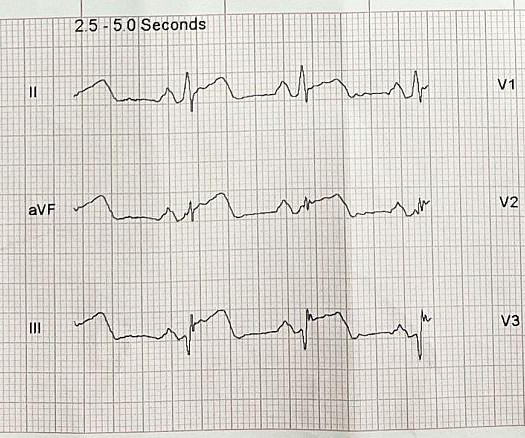Instructors' Collection ECG - Inferior Posterior Wall M.I. In Cabrera Format
ECG Guru
AUGUST 26, 2023
Does something about this ECG look "different" to you? This ECG shows a “classic” presentation of inferior-posterior M.I. when it is caused by a lesion in the right coronary artery (RCA). There are ST elevations in leads II, III, and aVF. Reciprocal ST depression is seen in Leads I and aVL. There is also reciprocal ST depression in Leads V1 – V3.









Let's personalize your content